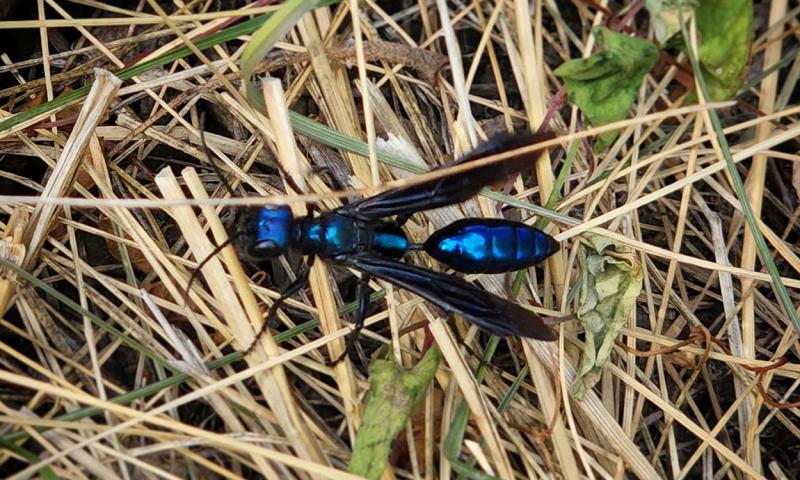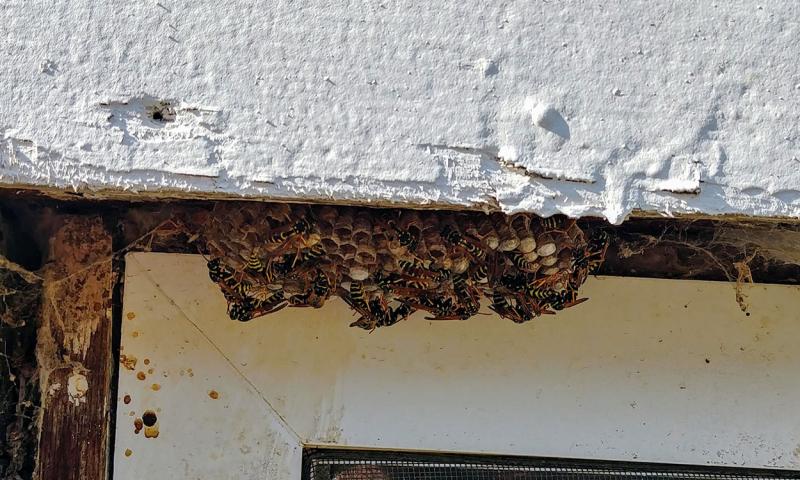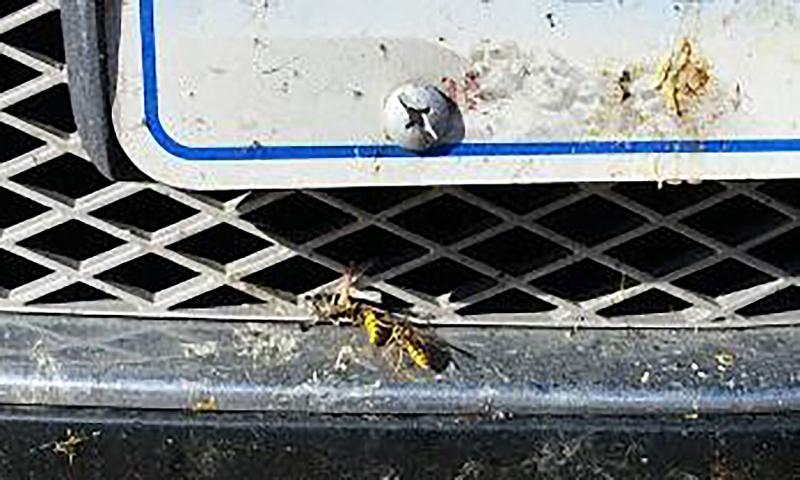Written with contributions by Shelby Pritchard, former SDSU Extension Pest Management Specialist.
Originally Submitted: September 1, 2022
Wasps receive attention no matter the time of year. However, they are especially noticeable in late summer and early fall. Wasps, such as yellow jackets and paper wasps, have annual nests, so most of the individuals that are active now will not survive the winter. Only the newly produced queens will find a sheltered location to overwinter and begin a new colony in the spring.
Solitary vs. Social

Wasps don’t always live in large colonies. There are many species of wasps in South Dakota that are solitary (e.g. cicada killers); the females create and provision nests in the ground, and their young do not emerge as new wasps until the next year. These solitary wasps visit flowers and feed on nectar for energy, and they might be noticed near the entrance to their nest. Some solitary wasps can be over an inch long (Figure 1). While they look threatening, these wasps are generally docile and will not bother people.
The aforementioned yellow jackets and paper wasps are social, meaning they live in groups in a nest or hive. Since the nest contains their young, it is often guarded and protected by members of the colony. Getting close to a nest might get you buzzed by some of the guards, and they will sting as a defense mechanism.
Nesting Behavior

Many annual wasp nests escape detection for most of the season. These nests are small and often hidden. Since the colonies are at or close to their maximum size by late summer, the nesting areas become more apparent.
Soffits, eaves, shutters and other voids on the exterior of a home or garage are the preferred places for wasps to build their nests.
As garden produce and tree fruits ripen and fall, be on the lookout for wasp activity as you harvest these items. These insects are attracted to overripe and sometimes fermented fruit and use it as a food source. To reduce wasp activity in these areas, make sure to pick up any fallen fruit and dispose of it. Wearing gloves is a great way to protect yourself from stings while harvesting.
Garden Benefits

Not every wasp nest has to be managed. Wasps are considered beneficial insects. They hunt or scavenge for caterpillars and other insects to feed their young. If they are nesting in an out-of-the-way location, consider allowing them to stay as they can provide pest control for the garden.
Management
At this point in the year, attempting to manage annual wasps is mostly unnecessary. After the first one or two hard frosts, the colony will die. The best time to manage a wasp nest is in the spring when their activity is first noticed. Never seal up a void or opening that contains live wasps or an active nest, as they may chew their way out and end up inside the affected structure. Wasp management should be attempted only with great care and preparation. If treating a wasp nest with an insecticide, choose a time with cooler temperatures, as the wasps will be more sluggish. Furthermore, it is best to target nests at dawn, dusk or after dark, as most of the colony will be present at this time. Wasps also rely heavily on sight, so the low-light conditions can reduce their aggressiveness.


